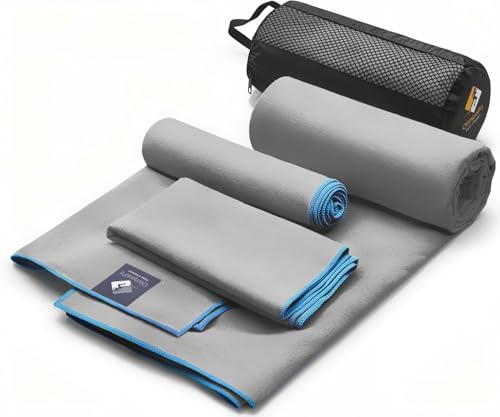I know the rush that hits when I crave a start line at the last minute. Maybe training clicked this week or a free weekend popped up. A sprint or Olympic race could be just what I need. The trick is finding a legit spot fast without burning time or cash.

In this guide I share my go to ways to uncover late openings and standby lists. I tap race calendars social groups and local clubs that post fresh updates all day. I also show how I confirm details fast so I do not chase ghosts. With a few smart moves I can register pack and be ready to race on short notice. Let’s find that finish line when the clock is already ticking.
Understanding Last-Minute Triathlon Races
Understanding last-minute triathlon races means knowing how openings appear and how registration works. I use last-minute to mean inside 14 days of race day, with most real openings arriving inside 3–7 days.
Formats matter because distance drives readiness and logistics.
| Format | Swim | Bike | Run | Governing reference |
|---|---|---|---|---|
| Super Sprint | 400–500 m | 10 km | 2.5 km | World Triathlon Competition Rules |
| Sprint | 750 m | 20 km | 5 km | World Triathlon Competition Rules |
| Olympic | 1,500 m | 40 km | 10 km | World Triathlon Competition Rules |
| 70.3 | 1.9 km | 90 km | 21.1 km | Ironman 70.3 Athlete Guide |
| 140.6 | 3.8 km | 180 km | 42.2 km | Ironman Athlete Guide |
Availability hinges on race scale and sanctioning, not luck.
- Definition — Last-minute means registering inside 14 days, with many spots releasing after deferral deadlines and final payment lapses.
- Categories — Local sprint and Olympic races, for example city-park triathlons and charity triathlons, post late entries more often than branded long-course races.
- Seasonality — Openings cluster in late spring and late summer, when back-to-school and travel shifts increase withdrawals.
- Geography — Urban venues with larger caps, for example lakefront cities and resort towns, display more roll-down entries than rural venues.
- Sanctioning — USAT and World Triathlon sanctioned events track roster changes in standard systems, which simplifies late registration processing (USA Triathlon, World Triathlon).
- Mechanics — Waitlists, deferrals, and transfer windows unlock slots in daily batches, once organizers reconcile payments and medical forms.
- Pricing — Late entry pricing increases in the final week, with some systems adding dynamic fees per day.
- Licensing — USAT one-day membership for adults costs $15 in 2024, which applies at sanctioned races without annual membership (USA Triathlon).
- Verification — Athlete guides list on-site registration and packet pickup windows, which determine whether you can register in person.
- Timing — Online registration often closes 24–72 hours before gun time to finalize bibs, while on-site entries open at packet pickup or race morning.
- Constraints — Field caps, permit limits, and safety ratios restrict late entries at swim-heavy venues and narrow bike courses.
Mechanics govern how to find last-minute triathlon races inside official channels.
- Waitlists — Automated invites go out by email in order, if you confirm inside the stated window.
- Roll-downs — Charity and sponsor blocks release unsold entries to the public, if partners miss internal deadlines.
- Transfers — Name transfers reopen spots instantly, if the event enables peer-to-peer exchanges in its platform.
- Deferrals — Deferred athletes free their current-year spots when they select a future date, if the policy allows forward movement only.
- On-site — Same-day sales occur at small local races, if the guide states on-site registration and you present photo ID.
Logistics dictate realistic last-minute execution for racing and training alignment.
- Documents — Photo ID, USAT proof, and payment card get you through check-in, if staff verify membership on-site.
- Gear — Wetsuit status follows water temperature thresholds, if the head official posts readings under World Triathlon and USAT rules (World Triathlon, USA Triathlon).
- Timing — Packet pickup closes on schedule the day before or race morning, if the venue enforces park access hours.
- Support — Bike tech, hydration, and course markings vary by scale, if the organizer lists limited services for low-cost races.
Risk management keeps last-minute triathlon races productive, not chaotic.
- Safety — Weather, water quality, and current advisories drive swim changes first, if officials detect substandard conditions.
- Contingency — Duathlon conversions and short-course mods preserve competition, if the swim cancels under local authority guidance.
- Compliance — Drafting rules, position penalties, and blocking calls still apply, if marshals monitor even small fields (World Triathlon, USA Triathlon).
Sources: USA Triathlon Competition Rules and Membership, World Triathlon Competition Rules, Ironman Athlete Guides.
Best Platforms And Apps To Find Last-Minute Triathlon Races
I track openings across official calendars and active signup hubs to catch late entries fast. I use verified sources for accuracy to avoid dead links and canceled events.
Race Aggregators And Calendars
Race aggregators and calendars surface last-minute triathlon races from many organizers. I start with USA Triathlon’s sanctioned calendar for verified events and rules compliance according to USA Triathlon. I scan World Triathlon’s event list for international options according to World Triathlon. I check Ironman’s official site for late transfers and on-site entries according to Ironman Group.
- Search official calendars for verified status and current permits
- Filter by date range and distance for quick fits across sprint and standard formats
- Enable waitlist alerts on RunSignup and Active for auto notifications
- Cross-check location and packet pickup on the organizer page for real-time changes
- Bookmark regional hubs like TriFind and Eventbrite for community races
Sources: USA Triathlon, World Triathlon, Ironman Group, RunSignup, Active
Social Media And Community Groups
Social media and community groups post real-time slots and dropouts. I monitor Facebook Groups for local tri scenes and club pages for cancellation roll-downs. I follow Reddit communities for regional threads and athlete swaps. I track Instagram Stories from race directors for pop-up on-site registration. I watch Discord servers for coaching squads and team rosters.
- Join location based groups for city and state alerts
- Set keyword alerts for last-minute triathlon races and open spots
- Ask for confirmed links only to avoid scams
- Share intent to race to attract transfer offers
- Verify USAT sanctioning on the official calendar before payment
Sources: USA Triathlon, Meta Platforms, Reddit
Local Clubs And Race Directors’ Newsletters
Local clubs and race directors’ newsletters announce late entries first. I subscribe to municipal park districts and timing companies for weekend adds. I sign up for race series lists to catch deferral rollovers. I attend club track nights to hear about on-site registration.
- Subscribe to race series newsletters for early access codes
- Add timing companies to email filters for pop-up events
- Contact local race directors for standby lists and volunteer to race swaps
- Check shop boards at tri stores for transfers and partner events
- Confirm insurance and waiver status with the organizer before traveling
How To Find Last-Minute Triathlon Races: A Step-By-Step Approach
I target fast filters, fast responses, and fast confirmations to find last-minute triathlon races. I keep actions simple and repeatable to cut search time.
Set Smart Filters And Radius
I set platform filters first to surface viable last-minute triathlon races. I filter by distance type like Sprint, Olympic, 70.3, 140.6, by registration status like open or waitlist, and by date range like next 3–14 days on USA Triathlon, World Triathlon, and IRONMAN calendars (USA Triathlon, World Triathlon, IRONMAN). I expand the radius next to unlock more options fast. I start at 50 miles for urban regions, then bump to 100–150 miles for mixed regions, then scan travel time against packet pickup rules. I add terrain keywords next like flat, hilly, ocean, lake in aggregator search fields on RunSignup and Active. I save the filter set last and reload it daily.
- Set filters: distance type, registration status, date window
- Expand radius: 50 miles, 100 miles, 150 miles
- Add terrain terms: flat, hilly, ocean, lake
- Save searches: daily refresh, instant scan
Leverage Waitlists, Transfers, And Rollovers
I join waitlists first because late openings pop after weather shifts, illness, or travel snags. I enable instant notifications on RunSignup and Active and I respond within 15 minutes to secure the slot (RunSignup Waitlists, Active Registration Support). I check transfer policies next because many directors allow bib transfers or deferrals under clear windows. I look for self-serve transfer tools on RunSignup, and I confirm ID checks and USAT license requirements for on-site validation (USAT Competitive Rules). I ask about rollovers last when events hold deferral credits from prior postponements, then I confirm how the deferral converts to a current entry.
- Join waitlists: instant alerts, 15 minute response
- Use transfers: self-serve tools, ID checks, USAT license
- Request rollovers: deferral credit, conversion rules
- Confirm details: wave start, cutoff times, packet pickup
Monitor Cancellation Windows And Price Drops
I track organizer cutoff times first to catch late openings from withdrawals. I scan announcements in Facebook groups, club Slack channels, and organizer newsletters during the 72 hour window pre race when churn spikes. I watch dynamic pricing next on RunSignup where directors publish price periods and send codes when inventory remains late in the cycle (RunSignup Pricing Tools). I check related costs last like hotel cancellation windows, rental car rates, and bike transport slots to keep the total budget within range when a late entry lands.
- Track cutoffs: 72 hour churn, organizer posts, club feeds
- Watch pricing: dynamic periods, late codes, inventory pushes
- Check costs: hotel cancel window, car rates, bike transport
- Recalculate total: entry fee, travel, license, insurance
| Tactic | Metric | Typical Range | Source |
|---|---|---|---|
| Date filter window | Upcoming days scanned | 3–14 days | USA Triathlon, World Triathlon |
| Search radius | Drive distance for late entry | 50–150 miles | Coach practice |
| Waitlist response time | Hold time after offer | 15–60 minutes | RunSignup Waitlists |
| Transfer cutoff | Days before race | 3–10 days | Event specific, RunSignup Transfers |
| Late churn window | Pre race cancellation surge | 24–72 hours | Coach practice |
| Dynamic price change | Possible discount or code | 10–30% | RunSignup Pricing Tools |
- USA Triathlon Sanctioned Events Calendar
- World Triathlon Events
- IRONMAN Official Site and Athlete Guide pages
- RunSignup Waitlists and Transfers Documentation
- USAT Competitive Rules and one day license policy
Evaluating Race Quality On Short Notice
« Triathlon Events for Beginners in Winter: Top Races, Gear Tips & How to Pick
Best Triathlon Events with Charity Partnerships: How to Race and Give Back »
I judge last‑minute triathlon race quality fast by verifying safety, logistics, and proof of execution. I move from sanctioning to cutoffs to community evidence.
Course Safety, Permits, And Support
- Check sanctioning by USA Triathlon or World Triathlon for insurance and safety oversight, according to USA Triathlon Competitive Rules and Event Sanctioning.
- Verify municipal permits and law enforcement support via the athlete guide or organizer email if the listing omits permit details.
- Confirm a published swim safety plan that lists water temperature policy, sighting buoys, and powered rescue craft, per USA Triathlon wetsuit thresholds at 78 F and 84 F.
- Confirm medical coverage with an on‑site ambulance, a named medical director, and clear emergency access points, per World Triathlon Medical Guidelines.
- Ask about road closures or controlled intersections for the bike course if the course uses open roads.
Logistics, Cutoffs, And On-Course Resources
I prioritize transparent cutoffs and predictable aid spacing for last‑minute execution.
- Check leg cutoffs and total time limits in the athlete guide if the registration page lists only a finish deadline.
- Confirm start format, transition open times, and packet pickup windows to avoid missed check‑ins.
- Verify aid station spacing and supplies for heat and elevation, then adjust your fueling plan.
| Distance | Swim cutoff | Bike cutoff | Run cutoff | Total time | Run aid spacing | Bike aid spacing |
|---|---|---|---|---|---|---|
| Super Sprint | 0:20 | 1:00 | 0:45 | 2:00 | 1–2 mi | self‑supported |
| Sprint | 0:30 | 1:30 | 1:00 | 3:00 | 1–2 mi | self‑supported |
| Olympic | 0:50 | 2:30 | 1:30 | 4:00 | 1–2 mi | 10–15 mi |
| 70.3 | 1:10 | 5:30 | 3:30 | 8:30 | 1 mi | 12–18 mi |
| 140.6 | 2:20 | 10:30 | 6:30 | 17:00 | 1 mi | 12–20 mi |
Ironman athlete guides list 70.3 and 140.6 cutoffs and aid spacing, while local sprint and Olympic events vary by organizer.
Reviews, Results History, And Photos
I validate execution quality with public evidence before I commit.
- Scan official results archives for at least 3 prior editions and consistent finisher counts, then flag large swings across years.
- Compare timing providers across years for continuity, then favor reputable firms like Sportstats or ChronoTrack.
- Read recent athlete reviews on Google, Facebook, and RaceCheck for safety, aid reliability, and communication, then discount posts older than 24 months.
- Look through race photos for course markings, buoy placement, and volunteer density, then map these against the published course.
- Check DNF and DNS notes in results for weather or course changes, then contact the race director if recent notes mention safety incidents.
Sources: USA Triathlon Competitive Rules and Sanctioning, World Triathlon Medical Guidelines, Ironman Athlete Guides.
Budgeting And Booking Quickly
I budget fast and book faster to lock a last-minute triathlon race. I use clear cost ranges, strict cutoffs, and instant confirmations.
Entry Fees, Transfer Policies, And Insurance
Entry fees, transfer policies, and insurance drive last-minute triathlon budgeting.
- Check total entry cost first, then add processing fees, one day license, and on site surcharges.
- Check transfer and deferral rules early, then decide fast if cutoffs approach.
- Check refund paths only if policies list documented covered reasons.
- Check USAT sanctioning status, then count on secondary medical coverage during the event.
- Check registration protection terms, then verify exclusions like pre existing conditions.
- Check credit card perks for trip delay or baggage, then confirm sports coverage language.
| Cost or policy item | Typical range or rule | Source |
|---|---|---|
| Sprint or Olympic late entry | 80 to 180 USD | Race organizers, Active reg pages |
| 70.3 late entry | 300 to 425 USD | IRONMAN registration pages |
| 140.6 late entry | 600 to 900 USD | IRONMAN registration pages |
| Processing fee | 6 to 12 percent | Active, RunSignUp fee schedules |
| USAT one day license | 15 USD | USA Triathlon membership info https://www.usatriathlon.org/membership |
| Transfer fee | 20 to 75 USD | IRONMAN Transfer and Withdrawal Policy https://www.ironman.com/policies |
| Transfer cutoff | 30 to 45 days pre race | IRONMAN policy pages |
| Deferral option | Event specific | Organizer policy pages |
| Registration protection | 100 percent for covered reasons | Allianz via Active Registration Protection https://www.allianz.com |
| USAT participant accident coverage | Secondary medical during sanctioned events | USA Triathlon Insurance Overview https://www.usatriathlon.org |
Examples
- Compare organizer pages for fees, dates, locations.
- Compare policy PDFs for transfer, withdrawal, deferral.
- Compare registration protection certificates for covered reasons, documentation, time limits.
Coach notes
- Prioritize races with clear cutoffs, visible past results, active customer support.
- Prioritize events with USAT sanctioning, posted permits, on site medical.
Travel, Lodging, And Rental Hacks
Travel, lodging, and rental hacks cut costs and compress booking timelines.
- Book flights on carriers that price bikes as standard luggage, then keep weight under 50 lb and size within stated limits.
- Book one way flights for flexibility, then use points if cash prices surge.
- Book hotels near packet pickup, then walk to start to avoid parking fees.
- Book same day deals on apps like HotelTonight, then confirm late check in.
- Book host hotels from the race site first, then ask for the athlete rate.
- Book cancellable stays on points, then reprice if rates drop.
- Rent a bike locally from tri shops, then bring your own pedals, saddle, and fit notes.
- Rent a car only if transition is far, then compare peer to peer options like Turo.
- Ship a bike only if travel windows allow, then verify delivery by the day before packet pickup.
Quick cost ranges
- Expect bike as luggage at 30 to 50 USD each way on major US airlines, then avoid oversize or overweight penalties by packing light. Sources Delta, United, American baggage pages.
- Expect hotel same day discounts of 10 to 40 percent near airports or business districts, then verify resort fees on checkout pages. Sources HotelTonight, major chains best rate policies.
- Expect local bike rentals at 50 to 120 USD per day, then book a proper size and confirm a pre race pickup window. Sources local tri shops and rental catalogs.
Race day flow
- Pack in a soft sided bike case only if your frame is small, then test for protection with towels and foam.
- Pack in a hard case for carbon aero frames, then measure for airline limits.
- Pack nutrition that matches aid station brands, then buy ice and bottles on arrival.
Examples
- Coordinate with local clubs on Facebook Groups for homestays, carpools, gear loans.
- Coordinate with race directors for host hotel codes, late packet pickup windows.
- Coordinate with shops for pedal wrenches, torque checks, spare tubes.
- USA Triathlon sanctioning and insurance https://www.usatriathlon.org
- IRONMAN registration and transfer policy https://www.ironman.com/policies
- Airline bike baggage rules Delta, United, American baggage pages
- Active and Allianz Registration Protection terms https://www.active.com and https://www.allianz.com
Training And Gear Readiness On Short Notice
I lock in a fast-read plan that fits last-minute triathlon races. I focus on quick taper cues and a tight gear kit so execution stays clean.
Distance-Specific Tweaks And Tapers
I match distance, tweak volume, and keep intensity high. I base reductions on taper research that favors 41–60% volume cuts with maintained intensity and brief race-pace work for peak outcomes (Mujika and Padilla, 2003, Sports Medicine).
| Distance | Race-week taper days | Volume vs normal | Quality focus | Race-pace touch | Carb target day-before | Bike fluid target |
|---|---|---|---|---|---|---|
| Super Sprint | 2–3 | 60–70% | VO2 strides, short bricks | 4–6 min total | 7–10 g/kg | 0.4–0.6 L/h |
| Sprint | 3–5 | 60–70% | Threshold reps, openers | 6–10 min total | 7–10 g/kg | 0.5–0.7 L/h |
| Olympic | 5–7 | 50–60% | Tempo sets, pace bricks | 8–12 min total | 7–10 g/kg | 0.6–0.8 L/h |
| 70.3 | 7–10 | 40–50% | Sub-threshold blocks, long openers | 10–14 min total | 8–12 g/kg | 0.7–0.9 L/h |
| 140.6 | 10–14 | 40–50% | Aerobic economy, split bricks | 12–16 min total | 8–12 g/kg | 0.7–1.0 L/h |
- Keep intensity high, if legs feel flat cap reps and preserve form.
- Keep frequency steady, if sleep dips trim session duration not count.
- Keep race pace fresh, if fatigue rises shift pace touches to shorter sets.
- Insert one mini brick, if time crunch hits stack it the day 3–4 window.
- Insert mobility daily, if stiffness spikes swap easy spin for 15 min mobility.
- Cap longest session at 30–45 min swim, 60–90 min bike, 30–45 min run, if racing 70.3–140.6 slide bike to 90–120 min by day 7–10.
- Prime with openers the day prior, if travel blocks training move to morning of packet pickup.
Evidence notes: Taper principles draw from controlled reviews on endurance tapering that support reduced volume with maintained intensity and short race-pace exposures (Mujika and Padilla, 2003, Sports Medicine). Carb targets align with the ACSM, Academy of Nutrition and Dietetics, and Dietitians of Canada position stand on endurance fueling at 7–12 g/kg in the 24 h before competition (Thomas et al., 2016, MSSE). Bike fluid ranges align with ACSM guidance at 0.4–0.8 L/h adjusted for sweat rate and conditions (ACSM, 2007, MSSE update).
Minimalist Packing And Transition Checklist
I pack a lean tri kit that covers rules, safety, and speed for last-minute triathlon races.
- Pack race ID, USAT card, and payment card, if on-site pickup runs require verification.
- Pack tri suit, if water cools add thin neoprene cap under race cap.
- Pack swim cap, goggles, and spare strap, if vision blurs switch to tinted or clear based on light.
- Pack approved helmet with chin strap and intact bar-end plugs, if racing under USA Triathlon rules carry no headphones on course (USA Triathlon Competitive Rules).
- Pack bike, pedals, and multi-tool, if flying add derailleur guard and spare hanger.
- Pack spare tube, CO2, inflator, tire levers, and mini pump, if tubeless add plug kit and 30 ml sealant.
- Pack cycling shoes and elastic bands for flying mounts, if mount line crowds default to on-the-run clipping.
- Pack run shoes with elastic laces and race belt, if heat climbs add hat and sunglasses.
- Pack nutrition labeled by leg, if sprint plan 30–45 g carbs total then scale to 60–90 g/h on bike for Olympic–140.6 per ACSM guidance.
- Pack fluids mixed to 500–700 mg sodium per bottle, if sweat sodium runs high raise to 800–1000 mg guided by previous tests.
- Pack anti-chafe, sunscreen, and small towel, if rain starts add clear lens and light vest.
- Pack timing chip strap, if organizer supplies chip at pickup attach it after bike check.
- Pack duct tape and zip ties, if racking feels loose secure number and spares.
Transition layout
- Place helmet upright on aerobars, if wind gusts loop strap through extension.
- Place bike shoes clipped or on ground by front wheel, if rules restrict pre-clipping keep them ground side.
- Place run shoes front-facing with powder and elastic laces, if rain falls add a small bag cover.
- Place nutrition front and center by helmet, if nerves spike simplify to one bottle and one gel.
- Place number belt on top of run shoes, if course needs number on bike attach to belt before T1.
- Mujika I, Padilla S. Scientific bases for precompetition tapering strategies. Sports Medicine, 2003.
- Thomas DT, Erdman KA, Burke LM. Position of the Academy of Nutrition and Dietetics, Dietitians of Canada, and ACSM. MSSE, 2016.
- American College of Sports Medicine. Exercise and fluid replacement. MSSE, 2007.
- USA Triathlon Competitive Rules, latest edition.
Common Pitfalls To Avoid
I chase last-minute starts for the same thrill you do. I also avoid avoidable mistakes that drain time and money.
Overlooking Medical, Weather, And Heat Policies
- Confirm wetsuit legality by water temperature for fast decisions. USAT allows wetsuits at 78.0°F and below, allows optional wetsuits from 78.1–83.9°F with no awards eligibility, and bans wetsuits at 84.0°F and above (USA Triathlon Competitive Rules).
- Check heat stress plans before you book. World Triathlon uses WBGT categories to trigger cooling measures, distance changes, or start time shifts which can alter pacing and nutrition on race day (World Triathlon Competition Rules and Heat Stress Guidelines).
- Match medical requirements to your timeline. Organizers sometimes request on-site waivers, photo ID, and proof of membership or one-day license which can delay packet pickup if you arrive late night before race day (USA Triathlon).
- Plan lightning and severe weather contingencies. Many directors follow national safety guidance like clearing the course for thunder and delaying or modifying starts which can compress swim or bike legs and change cutoffs (NOAA Lightning Safety).
Key thresholds and triggers
| Policy item | Threshold | Action | Source |
|---|---|---|---|
| Wetsuit legal | ≤ 78.0°F water temp | Wetsuits allowed and awards eligible | USA Triathlon Competitive Rules |
| Wetsuit optional | 78.1–83.9°F water temp | Wetsuits allowed no awards or rankings | USA Triathlon Competitive Rules |
| Wetsuit banned | ≥ 84.0°F water temp | No wetsuits permitted | USA Triathlon Competitive Rules |
| Heat stress Category 3 | WBGT ~28–30°C | Cooling stations ice sponges pace checks | World Triathlon Heat Stress Guidelines |
| Heat stress Category 4 | WBGT > 30°C | Shortened distances or start time shifts | World Triathlon Heat Stress Guidelines |
| Lightning proximity | Thunder heard or strike detected | Course cleared and start delayed | NOAA Lightning Safety |
Sources: USA Triathlon Competitive Rules usatriathlon.org, World Triathlon Competition Rules triathlon.org, NOAA Lightning Safety noaa.gov
Ignoring Refunds, Deferrals, and Fine Print
- Verify late entry terms before you pay. Many races list no refunds inside 30 days and no race day transfers which blocks last-minute changes if plans shift unexpectedly (RunSignup policy tools, individual race pages).
- Capture deferral and transfer windows with dates. Ironman events commonly close transfers around 45 days out and restrict deferrals near race week which removes fallback options for late sign-ups (Ironman Withdrawal and Transfer Policies).
- Account for nonrefundable processing and licensing costs. USAT adult one-day licenses cost $15 and online platforms often add 5–8% in processing fees which raises the real total on checkout day (USA Triathlon Membership, Active Network fee disclosures).
- Confirm lodging and travel cancellation clocks. US DOT grants a 24 hour free cancellation for flights booked at least 7 days before departure which can protect you while you verify race confirmation and logistics (US Department of Transportation).
- Document policy snapshots at purchase. Screenshots of terms, fees, and cutoffs help resolve disputes with organizers or platforms if listings change after you register.
Typical last-minute cost factors
| Cost item | Typical range | Notes | Source |
|---|---|---|---|
| Late entry surcharge | 10–20% | Final price tier close to race day | Race organizer pages |
| Online processing fee | 5–8% | Platform dependent | Active Network fee disclosures |
| USAT one-day license | $15 | Adult nonmember race license | USA Triathlon Membership |
| Transfer fee | $20–50 | If transfers allowed | Organizer policy pages |
| Deferral fee | $0–50 | Event specific | Organizer policy pages |
Conclusion
Last minute races keep me curious and sharp. I treat the hunt like a mini challenge and stay flexible so I can jump when the right opening appears. If I keep my mindset steady I can turn a tight window into a fun and focused adventure.
If you feel that itch to race soon trust your prep and take a smart swing. Keep your kit ready set a few alerts and give yourself simple guardrails on time cost and travel. I’ll cheer you on from the start line or the search screen.










